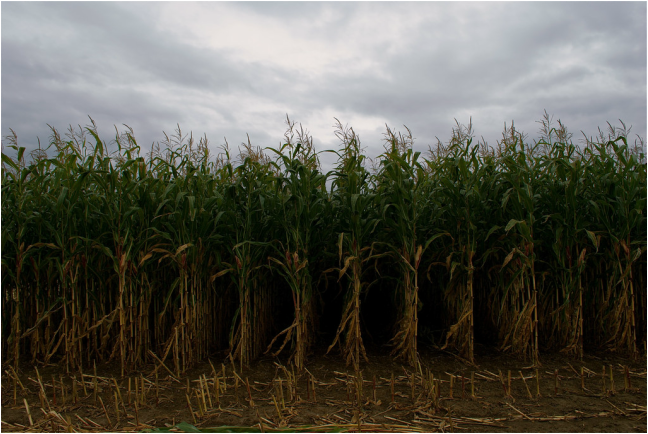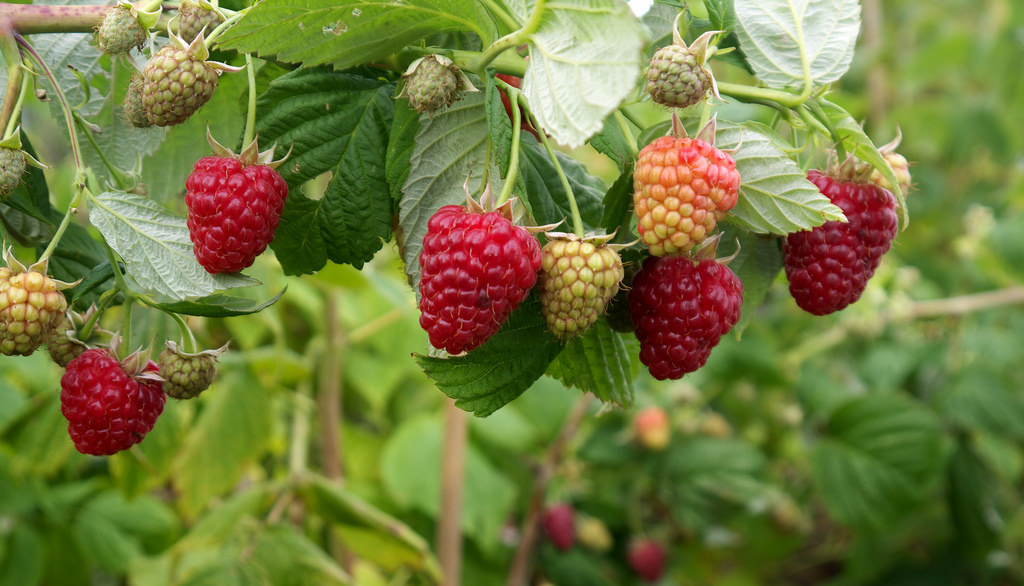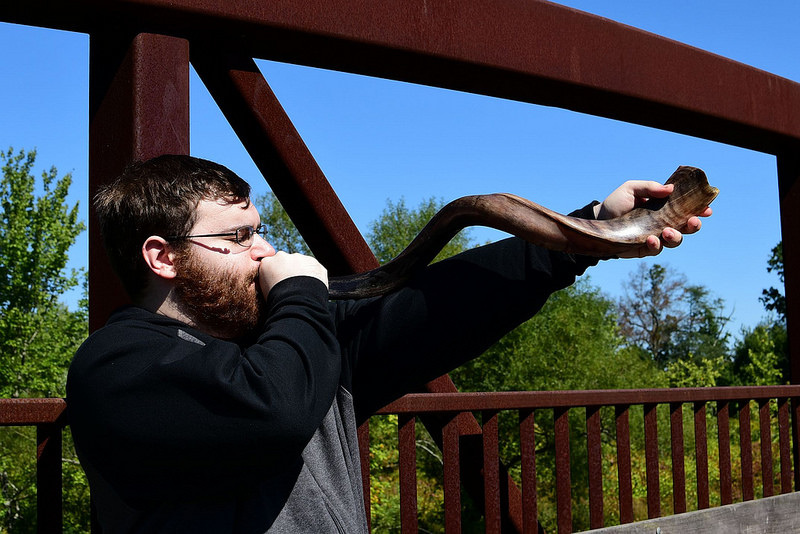|
As the season changes from summer to fall we are not the only ones who are changing our wardrobes. Many species of birds are changing their feathers also--a process called molting. Feathers die and need to be replaced just like the hair on our heads. A feather follicle will not stimulate growth for a new feather until the old one has been removed. Extra energy is needed for a bird to generate new feathers so it naturally happens during the less stressful times of its life--before migrations or the mating season.
Feathers, like hair, are composed of a protein called keratin. A bird's daily activities such as preening, rubbing against plants and flying weaken the keratin. As the damage accumulates, the feathers’ aerodynamic and insulating characteristics are compromised. Thus the need for new feathers. When a juvenile bird grows into an adult it replaces its down feathers with adult plumage. There are some species of birds that change their feathers twice a year, putting on bright plumage during the mating season and "camouflaged" plumage for the migrating and winter season. Colorful male goldfinches, scarlet tanagers and indigo buntings, for example, replace their bright yellow, red and blue plumage with feathers in dull shades of yellow-brown and tan. Those of us who enjoy bird watching can see the transformation that occurs with different species of birds during the change of season. Birds are not the only ones meant to "change their coats" with the change of season. The life of a Christian requires many changes and multiple transformations should occur during the life cycle of a Christian. The largest transformation we can observe is when a person is born into the family of God. God has a promise for everyone who sheds unbelief and replaces it with belief in Jesus. "Everyone who believes in Him may have eternal life." (John 3:15) After salvation a Christian begins the process of sanctification. We must learn to think like Jesus thinks and do what Jesus would do. This means shedding old thought patterns and embracing new ones. 2 Corinthians 10:5 describes the process: "We demolish arguments and every pretension that sets itself up against the knowledge of God, and we take captive every thought to make it obedient to Christ." As we walk out the journey of Christianity it will mean that we must remove sin and replace it with righteous living. "...Let us throw off everything that hinders and the sin that so easily entangles, and let us run with perseverance the race marked out for us." (Hebrews 12:1) Jesus taught His disciples about shedding pride so that humility would abound. "And He said: 'I tell you the truth, unless you change and become like little children, you will never enter the kingdom of heaven. Therefore, whoever humbles himself like this child is the greatest in the kingdom of heaven.'" (Matthew 18:3-4) When we are willing to shed the ways of the world to wait upon the Lord, He will impart renewed strength and the ability to soar on wings like eagles. (Isaiah 40:31) The apostle Paul makes it clear that our time on earth is meant to transform us into the likeness of Christ. Our citizenship is in heaven, not earth. He says, "And we eagerly await a Savior from there, the Lord Jesus Christ, who by the power that enables Him to bring everything under His control, will transform our lowly bodies so that they will be like His glorious body." (Philippians 3:21) As we cooperate with Christ we are “being transformed into His likeness with ever-increasing glory…” (2 Corinthians 3:18) There is a section of property along Dolington Road in Bucks County, PA, that has been dedicated as farm land. Nothing can ever be built on it; it has been legally designated as land to be perpetually farmed. This year the farmer planted corn on both sides of the road for as far as the eye can see. The dried stalks of the corn plants now stand in orderly rows like marching soldiers and remind me of the great harvest that was produced from those stalks. They also remind me that this is the time of the year when we are to celebrate the final feast of the Lord.
The Jewish people call the final feast Sukkot or The Feast of Tabernacles. It is also referred to as the Feast of Ingathering. It follows Rosh Hashanah and Yom Kippur. Together, the three feasts are meant to be rehearsals for what will be the Greatest Harvest of all times. These feasts speak a prophetic word about the future. While the spring feasts have been fulfilled through Jesus (Yeshua) and the Holy Spirit, we still look to God to fulfill the fall feasts. We believe that Yeshua will return in victory to set up His Millennial Kingdom during this time. During the past week, Jews and Gentiles who understand the significance of God's appointed feasts have been celebrating Sukkot. The Feast foreshadows the celebration that will take place in the Millennial Kingdom when we will tabernacle with Yeshua. Asher Intrater, Messianic Jew and founder and leader of Revive Israel, tells us that Sukkot "is the culmination of all the Biblical holy days, and therefore represents the final stage of the plan of salvation. After the great war of the end times and the second coming of Yeshua. (Zechariah 14:1-15) Those who survive of all the nations will go up to Jerusalem to worship and celebrate the Feast of Tabernacles. (Zechariah 14:16-21)" When we look at the elements involved in celebrating Sukkot we see how they draw us to be part of the Great Harvest. In addition to living in Sukkahs for seven days, the Jews would gather at the Temple to watch the priests perform a water libation ceremony. A gold vessel would have been filled with "living water" from the Pool of Siloam; a silver vessel would have been filled with wine. Each day, for six days, the priests carrying the vessels would approach the altar of sacrifice and march around it once. Then together they would empty their vessels on the altar at the Temple. On the seventh day the priests would march around the altar seven times. Excitement would build before they poured out the wine and water on that final day of Sukkot. John 7:37-39 shows us how Jesus celebrated this Feast and made it known that Sukkot is all about Him. "On the last and greatest day of the Feast, Jesus stood and said in a loud voice, 'If anyone is thirsty, let him come to me and drink. Whoever believes in me, as the Scripture has said, streams of living water will flow from within him.' By this He meant the Spirit whom those who believe in Him were later to receive..." The seventh day of the Feast is meant to be the culmination of the celebration. It occurs in the seventh month of Tishrei that is associated with the Hebrew letter LAMED which signifies our yearning to return to the absolute source. It is believed that Jesus will return as our victorious King during the fall feasts. He was poured out as a sacrifice for us so that we could be a part of the Great Harvest. The agricultural harvest that we see this time of the year should remind us of the great harvest of souls that will happen at the end of the age. (Revelation 14:14-15) In the meantime, the Lord invites us to tabernacle with Him so that we will remember how He has provided for us and look forward to the day of the Greatest Harvest. Did you ever take a morning walk on the beach as the sun was rising and feel overcome by the beauty of the moment? Have you had the opportunity to stand at the base of a gigantic redwood tree and look up toward heaven to contemplate the greatness of the one who created it? Think about those moments in your life when you have seen a display of nature that stops you in your tracks and overwhelms you. These are times of being awestruck!
The October 9 issue of Parade Magazine featured an article written by Paula Spencer Scott entitled "Feeling Awe May be the Secret to Healthy and Happiness." She quotes psychologists Dacher Keltner: "Awe is the feeling of being in the presence of something vast and beyond human scale that transcends our current understanding of things." In the year 2013, Keltner began a 3-year research project he calls "Project Awe." He discovered that awe can be experienced not only by looking at Niagara Falls or the Sistine Chapel or hearing the national anthem being sung by someone who "kills it," but also in simple things like "a friend is so generous you're astounded, or you see a cool pattern of shadows and leaves." After three years of study Keltner and his team have come to the conclusion that awe is "now thought to be a basic part of being human that we all need." He says "human beings are wired to feel awe" and has listed some benefits that occur when we experience it: (1) Awe binds us together. "We realize we're a small part of something much larger. Our thinking shifts from me to we." (2) Awe helps us see things in new ways. It causes us to stop and consider new information. (3) Awe makes us nicer and happier, more generous, fair and ethical. (4) Awe alters our bodies. The research of Jennifer Stellar of the University of Toronto suggests that awe has a "possible role in health and healing." Studies have shown that awe helps reduce depression, lowers blood pressure and strengthens the immune system. Veterans Stacy Bare and Nick Watson co-founded "Veterans Expeditions" to take returning soldiers to awe-inspiring sites. Those suffering from PTSD experience relief. Believers know who wired the need for awe into us. He is the King of Awe! "Dominion and awe belong to God; He established order in the heights of heaven." (Job 25:2) Have you ever heard someone say that there is a God-shaped hole in each of us and only God can fill it? That describes our need to connect with awe and the One who created it. If experiencing God's awe-inspiring creation transforms us, how much more does encountering Him? The gospels recount the stories of how Jesus healed many people of diseases and physical ailments, Luke 5:26 tells us how those who experienced the healings felt. "Everyone was amazed and gave praises to God. They were filled with awe and said, 'We have seen remarkable things today!'" Julie Mann is a teacher at Newcomers High School in Long Island City, NY. She has seen the studies on awe and takes her students on "Awe Walks" to connect them with nature or art. She says, "Kids who never talk in class or pay attention come to life." Paula Scott comments about this in her article. "Kids and grown-ups alike have fewer chances these days to find such transformative moments. We're increasingly stressed, indoors, plugged into devices and less tightly connected to neighbors and friends." We should make it a point to include "awe moments" in our lives. We do it by taking in God's creation and connecting with Him by expressing our worship and awe of Him. Let us join the prayer of Habakkuk: "Lord, I have heard of Your fame; I stand in awe of Your deeds, O Lord. Renew them in our day, in our time make them known..." (Habakkuk 3:2) Between the three walls of the Makefield Elementary School and its playground is a wonderful raised vegetable and flower garden where children can come to see how plants grow. Eagle scouts built this garden for a community project. It is divided into five sections with gravel paths between the planted areas. An open, wood arbor covers the center walkway. There is a bench, surrounded by zinnias and other annuals, at the end of this walkway, and next to it is a wooden box with a glass door. Inside the box are many children's books.
A few weeks ago my grandson Ben and I spend some time in this garden. We found corn plants, carrots and herbs. A good portion of one section of the garden is filled with all sizes of sunflowers. Sparrows flit around a bird feeder hanging from the arbor. Morning glories, with their dark blue flowers, are twined around two of the legs of the arbor. Butterflies are everywhere, enticed by the row of Butterfly bushes on one side of the building. Ben opened the treasure box of books as I sat on the bench to take in the diversity of plants around me. He selected a book that I used to read to my daughters--Are You My Mother? We read several other books before he selected one called Raspberries: An American Tale of Cooperation by Mary Newell DePalma. It is the story of a bird who is born with only one wing. She could not fly with her two brothers who took off to pick raspberries from the bushes in the park. She did the only thing she could do--jump down from the nest and begin to walk. Along the way she met a dog who decided to help her get to her destination. They walked toward the park and were confronted with a busy highway that had to be crossed in order to get to the park. The button to stop traffic and allow walkers to cross the road was positioned high on the traffic light pole. As the dog and bird were trying to figure out what to do a chipmunk scurried over the join them. The pole was too slippery for him to climb. Next, a frog came over to learn about their dilemma. He tried to use his jumping ability to reach the button but could not jump high enough. Eventually, the four animals figured out that if they cooperate with one another they could press the button. They made a tower by climbing on one another's backs. The bird at the top was able to peck the button with her beak and traffic stopped. They crossed the road together and all of them enjoyed picking and eating raspberries from the bushes in the park. Each animal in this story came with a gift but, alone, they could not use their gift to accomplish the goal. It is only as they cooperated with one another that they had success. The Bible talks about how God has given to each person different gifts for the common good of the Church. It is through using these gifts, in unity, that we obtain the fruits of the Spirit. "Each one should use whatever gift he has received to serve others..." (1 Peter 4:10) "It was He who gave some to be apostles, some to be prophets, some to be evangelists, and some to be pastors and teachers, to prepare God's people for works of service, so that the body of Christ may be built up until we all reach unity in the faith and in the knowledge of the Son of God and become mature, attaining to the whole measure of the fullness of Christ." (Ephesians 4:11-13) This is our goal--to obtain the fullness of Christ. When we use our gifts for this common goal and operate in a spirit of unity we will see the fruit of unity. The New Year (5777) is upon us and Jewish people around the world will be greeting one another by declaring "L'shanah tovah" (for a good year). Over the two days of celebrating the "Head of the year," or Rosh Hashanah, the shofars will be blown 100 times each day. The number 100 has several meanings. It means fullness or full compensation, election of grace and children of promise.
The sound of the shofar is such a significant part of the celebration of the New Year that this feast is called "Yom Teru'ah" or Day of Blowing. We are called to gather together for the New Year. "Say to the Israelites: 'On the first day of the seventh month you are to have a day of rest, a sacred assembly commemorated with trumpet blasts. Do no regular work, but present an offering made to the Lord by fire.'" (Leviticus 23:24-25) This is a celebration of the birth of the world and humanity. Yom Teru'ah occurs during the seventh month of Tishrei, seven being the number of completion, perfection and rest. It is a Sabbath month dedicated to the Lord. Tishrei is connected with the Hebrew letter LAMED which signifies ones yearning to return to their absolute source. The New Year is a time to remember the past and to begin anew. It is also a time to be fruitful and multiply as the month of Tishrei is the month of the tribe of Ephraim which means double fruit. The feast of the Day of Blowing is meant to paint a picture of the Lord's return. However, the blowing of the shofar is also a reminder to look to the past to the roots of our faith and family. Genesis 22 is traditionally read in the synagogue. This is the story of Abraham and his trust in the Lord. He told his son Isaac--who was to be sacrificed as a burnt offering on Mt. Moriah--"God Himself will provide the lamb for the burnt offering..." (Genesis 22:7) It is interesting that the rabbis chose to highlight the portion of Scripture that teaches about the substitute atonement provided by God for Abraham's son, Isaac. "Abraham looked up and there in a thicket he saw a ram caught by its horns. He went over and took the ram and sacrificed it as a burnt offering instead of his son." (Genesis 22:13) Without the ram we would not have the ram's horn. And so the blowing of the shofar reminds us of the past, calls us to assemble together to remember the sacrifice that Abraham was called to make and to repent for the sins of the past year. Not only does the sound of the shofar warn of danger, but it heralds the beginning of a time of Jubilee and of a new year. Believers should be reminded that our Messiah will return to the sound of the trumpet. (Matthew 24:29-31) The things that we read in the Old Testament and the feasts of the Lord are shadows of the New Testament. (Colossians 2:16-17) They point us to our Messiah. The story of Abraham and Isaac illuminates God's plan to redeem humanity from sin and death. Rosh Hashanah is the beginning of a season of introspection and repentance called the 10 Days of Awe. It is a time to get right with others and request forgiveness from those we have wronged. The 10 days are completed on Yom Kippur, a day of fasting and prayer when we are to get right with God. Five days later the 8-day celebration of Sukkot (The Feast of Tabernacles) will be celebrated. The fall feasts call us to return to God and experience His glory. The glory of God is manifest in Jesus, our Messiah. Psalm 98:6 declares, "With trumpets and the blast of the ram's horn--shout for joy before the Lord, the King." Indeed, just as God gave the ram to Abraham, He gave us the sacrificial lamb, His Son, who is our shield and the horn of our salvation. (Psalm 18:2) This is reason to celebrate. It is time to declare "L'shanah tovah." |
Joan E. MathiasCategories
All
Archives
July 2024
|





 RSS Feed
RSS Feed